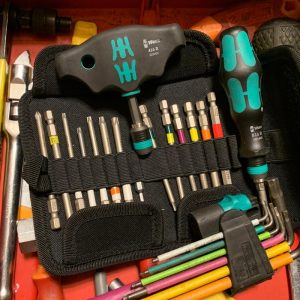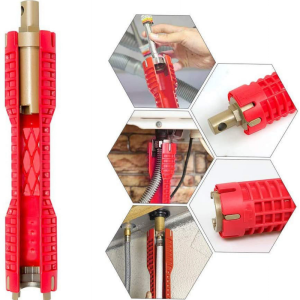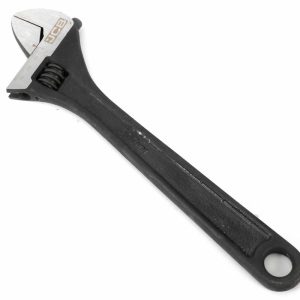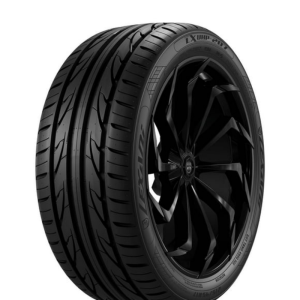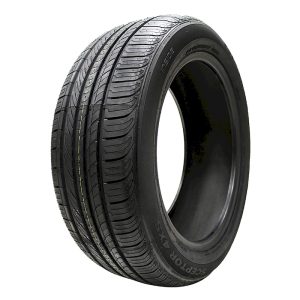
Learning how to use a ratchet wrench can simplify numerous tasks, from minor home repairs to automotive projects. This versatile tool is essential for tightening or loosening bolts and nuts, making it a valuable addition to any toolkit. Whether you’re a beginner or a seasoned DIY enthusiast, mastering the use of a ratchet wrench will save time, effort, and frustration. In this guide, we’ll walk you through the basics of a ratchet wrench, how to use it effectively, and provide tips to maximize its potential.
Understanding the Basics of a Ratchet Wrench
What is a Ratchet Wrench?
A ratchet wrench, commonly known simply as a ratchet, is a tool designed to fasten and loosen bolts and nuts. The ratchet head rotates in one direction while remaining locked in the opposite direction. This mechanism allows users to continue working without constantly readjusting their grip. It’s ideal for tight spaces where you might not have room to rotate a wrench fully.

Components of a Ratchet Wrench
- Handle: Provides leverage and grip for operation.
- Ratchet Head: Contains the gear and mechanism that controls the ratcheting action.
- Drive: Holds sockets of various sizes that match the fasteners.
- Direction Switch: Located on the head to reverse the direction for tightening or loosening.
Different Ratchet Sizes
Ratchet wrenches come in several standard sizes, each suited to different applications:
- 1/4-Inch Drive: Best for small fasteners and light work.
- 3/8-Inch Drive: Ideal for medium-sized nuts and bolts, suitable for most home repairs.
- 1/2-Inch Drive: Used for heavy-duty applications like automotive repair.
Socket Attachments
A ratchet wrench uses socket attachments that fit over the bolt or nut head. These come in various sizes to fit specific fasteners. Ensuring you have the correct size is essential for a secure grip and to avoid damaging the bolt.
Step-by-Step Guide on How to Use a Ratchet Wrench
Step 1: Select the Right Socket
Start by choosing the socket that matches the bolt or nut you’re working on. Place the socket on the drive end of the ratchet. Most ratchets have a spring-loaded ball that secures the socket in place, so press firmly until you hear a click.
Step 2: Set the Direction
Determine whether you need to tighten or loosen the fastener. Use the direction switch on the ratchet head to set it to the desired mode. For loosening, flip the switch to “counterclockwise,” and for tightening, set it to “clockwise.”

Step 3: Position the Socket Over the Bolt
Place the socket securely over the bolt or nut. Ensure it sits snugly for a firm grip. If the socket feels loose, check if you have the correct size, as a loose socket may strip the bolt head or cause slipping.
Step 4: Begin Ratcheting
Grip the handle firmly and move it back and forth. The ratchet head will only engage in one direction, allowing you to tighten or loosen without removing the wrench. This continuous motion speeds up the work compared to traditional wrenches.
Step 5: Remove the Wrench
Once the bolt is adequately tightened or loosened, remove the ratchet wrench by sliding the socket off the bolt head. Press the release button on the ratchet head to detach the socket if needed.
Practical Tips for Effective Ratchet Wrench Use
Apply the Correct Amount of Force
One common mistake with ratchet wrenches is applying too much force. Ratchets are designed for speed rather than high torque, so avoid forcing the handle excessively. For stubborn bolts, try using a breaker bar to loosen them before switching to the ratchet.
Check the Socket Size Carefully
Matching the socket to the bolt size is essential for safe and effective use. Using a socket that’s too large can lead to stripped bolt heads and reduced efficiency.
Work in Tight Spaces
Ratchets excel in confined spaces where a full rotation is impossible. The short back-and-forth motion of the handle allows you to work effectively in these areas without needing to remove the wrench.
Maintain Your Ratchet Wrench
Regular maintenance ensures the longevity of your ratchet. Clean it after each use to remove dirt and debris, and occasionally apply lubrication to the gears. This upkeep will prevent rust and keep the mechanism smooth.
Common Mistakes to Avoid When Using a Ratchet Wrench
Over-Tightening Bolts
Applying too much torque can cause bolts to break or strip. Tighten bolts only to the manufacturer’s recommended specifications, especially when working with automotive parts or machinery.
Using the Wrong Ratchet Size
Avoid using a small ratchet for heavy-duty applications. A 1/4-inch drive ratchet may not handle the stress of larger bolts, leading to tool damage or injury.
Forcing the Ratchet Handle
When a bolt is difficult to loosen, many people instinctively apply excessive force to the ratchet handle. This can damage the tool or the bolt. Instead, use a breaker bar or apply lubricant to the bolt before attempting to loosen it with the ratchet.
Benefits of Using a Ratchet Wrench
Efficiency and Speed
One of the primary advantages of using a ratchet wrench is the efficiency it brings to tasks. Unlike traditional wrenches, which require a full rotation, a ratchet allows for continuous motion with minimal effort, saving time and reducing fatigue.

Versatility
With different socket sizes, a ratchet wrench can tackle a variety of tasks, from minor home repairs to car maintenance. Its versatility makes it a staple tool for professionals and DIYers alike.
Precision and Control
Ratchets offer a controlled tightening process, allowing users to adjust force precisely. This control minimizes the risk of damaging fasteners, making them ideal for delicate assemblies.
Types of Ratchet Wrenches and Their Uses
Flex-Head Ratchet Wrench
The flex-head ratchet features an adjustable head that pivots, making it ideal for accessing bolts in hard-to-reach angles. It’s perfect for automotive work where flexibility is essential.
Torque Ratchet Wrench
For tasks that require specific torque levels, a torque ratchet is the best option. It has a built-in mechanism to indicate when the set torque level is reached, ensuring accuracy.
Stubby Ratchet Wrench
The stubby ratchet is a compact tool designed for extremely tight spaces where a regular ratchet might not fit. Despite its small size, it’s effective for small bolts and minor adjustments.
Cordless Electric Ratchet Wrench
Electric ratchets eliminate the need for manual force, powered by rechargeable batteries. They are especially useful for repetitive tasks where manual ratcheting would be time-consuming.
Troubleshooting Common Ratchet Wrench Issues
Ratchet Slipping or Stuck
A ratchet wrench may slip if the gears are worn or if there is dirt inside the mechanism. Regular cleaning and lubrication prevent this issue. If the ratchet gets stuck, it could be due to a jammed internal part. In such cases, disassemble the wrench and clean it thoroughly.
Socket Detachment
If the socket keeps detaching, it may be due to a worn-out retention ball. Replacing the ball or upgrading to a higher-quality ratchet can resolve this issue.
Choosing the Right Ratchet Wrench for Your Needs
When selecting a ratchet wrench, consider the specific requirements of your projects. For general use, a 3/8-inch ratchet is the most versatile. However, for heavy-duty jobs, a 1/2-inch drive will provide greater strength. Electric ratchets are also an excellent option if you’re looking to complete tasks faster with less effort.
Start Mastering the Ratchet Wrench
A ratchet wrench is a valuable tool that, when used correctly, can streamline your work and improve efficiency. By understanding its functions and following these guidelines, you’ll get the most out of this versatile tool.
Enhance Your Skills
To truly master the ratchet wrench, practice is essential. Start with simple projects to build your confidence. As you become more comfortable, challenge yourself with more complex tasks. Familiarize yourself with the various socket sizes and learn how to quickly switch between them. This will not only save you time but also help you develop a keen sense for which tools work best for specific jobs.
Safety First
Always prioritize safety when using any tool, including a ratchet wrench. Wear appropriate safety gear, such as gloves and goggles, to protect yourself from potential injuries. Ensure your workspace is clean and organized to prevent accidents. Remember that a well-maintained tool is safer and more efficient, so invest time in keeping your ratchet in top condition.
Choose the Right Ratchet for the Job
Different projects may require different types of ratchets. For example, if you’re working in tight spaces, a flex-head ratchet can provide the necessary maneuverability. For heavy-duty tasks, a 1/2-inch drive ratchet will offer greater torque. By selecting the appropriate ratchet, you can significantly enhance your productivity and reduce frustration.

Maintenance Matters
Regular maintenance is key to prolonging the life of your ratchet wrench. Clean it after each use to remove dirt and debris. Lubricate the moving parts periodically to keep the mechanism smooth. Checking for wear and tear will help you catch any potential issues before they become serious problems. A well-cared-for ratchet will perform better and last longer, ultimately saving you money on replacements.
Community and Resources
Don’t hesitate to tap into online resources and communities. Many forums and video tutorials can offer valuable tips and tricks. Engaging with fellow DIY enthusiasts can provide insights into best practices and innovative techniques. Sharing your own experiences can also contribute to the collective knowledge, enriching the community.
